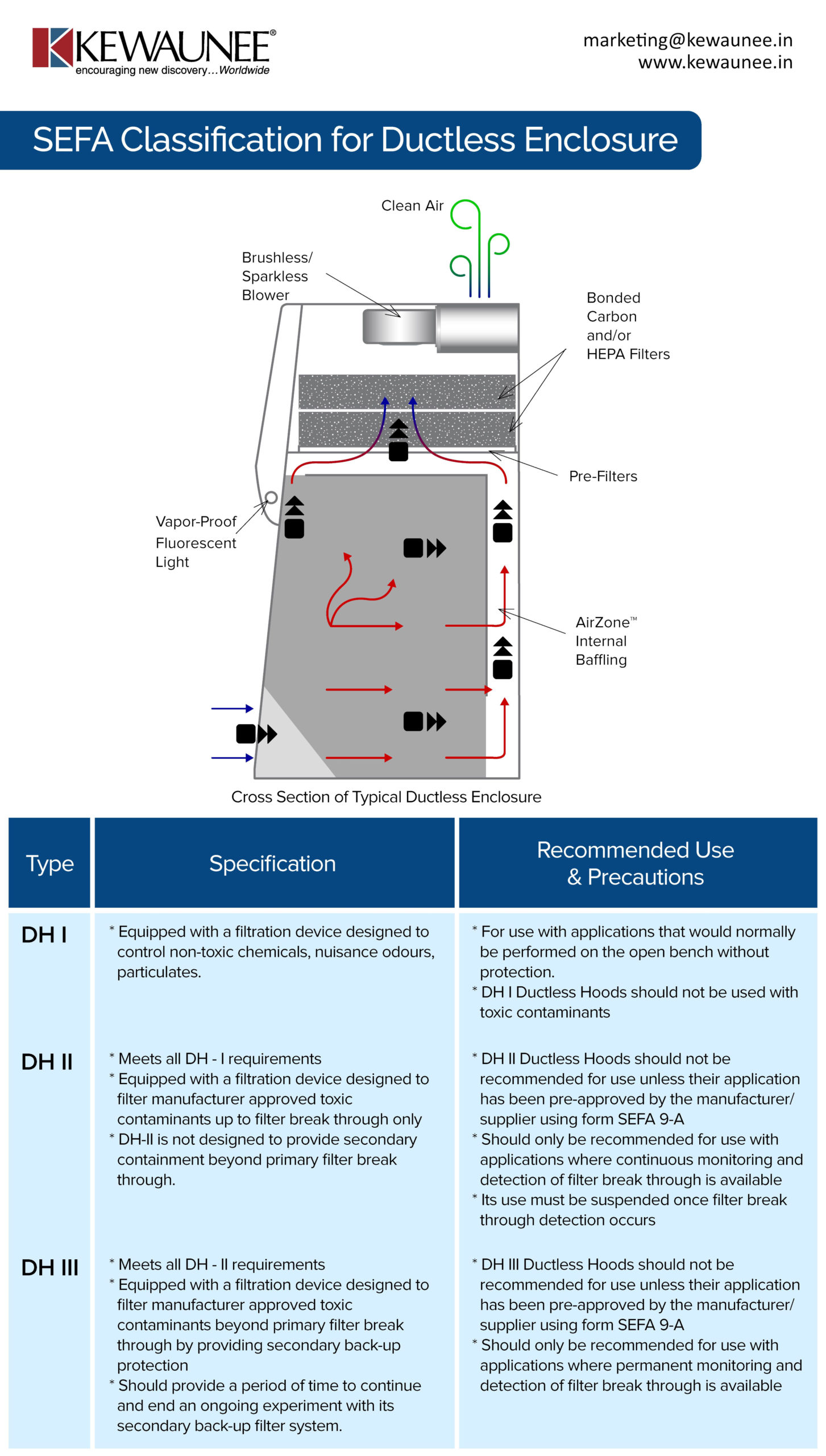SEFA Classification for Ductless Enclosure
A ductless hood is an enclosure designed for the handling of contaminants, which limits the propagation toward the operator and other personnel of such contaminants.
Typically, a ductless hood is not attached to any external exhaust system and equipped with its own independent ventilation system which forces the contaminated air to travel through a filter and recirculates it within the room.
The Scientific Equipment and Furniture Association (SEFA) is an international trade association comprised of manufacturers of laboratory furniture, casework, fume hoods and members of the design and installation professions.
SEFA 9-2010 classifies the ductless hoods into three categories – DH-I, DH-II, and DH-III. Let’s explore what the classification means in this infographic.
To download the specifications and download the brochure follow this link.
| TYPE | SPECIFICATION | RECOMMENDED USE & PRECAUTIONS |
| DH I |
|
|
| DH II |
|
|
| DH III |
|
|
Source: SEFA
Comments are closed.











